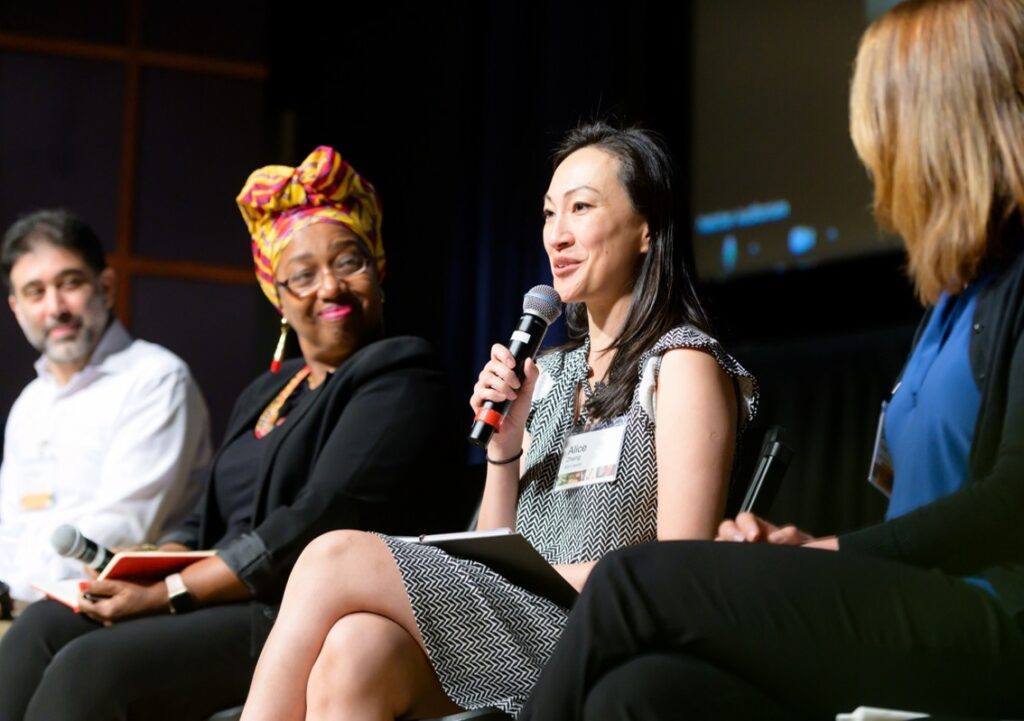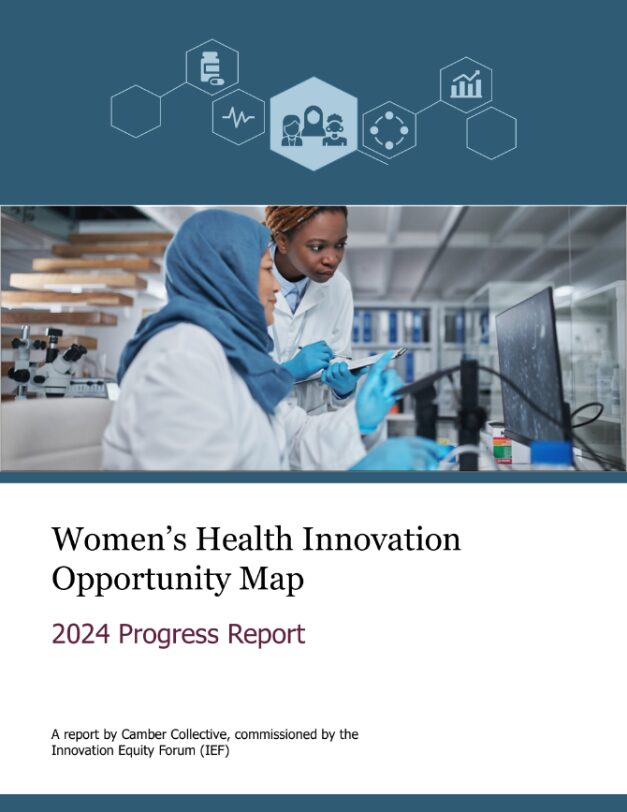2024 saw a growth in innovation to improve the health of women, highlighting the potential for transformative change — but the path to lasting impact will require sustained collaboration, increased funding, and unwavering commitment to center women’s voices in every decision
In early 2023, the Gates Foundation and the National Institutes of Health’s Office of Research on Women’s Health partnered with Camber Collective to establish the Innovation Equity Forum (IEF)—a global coalition of women’s health experts, innovators, and advocates. The IEF was launched to identify and prioritize critical opportunities to advance women’s health innovation worldwide. Its flagship initiative, the Women’s Health Innovation Opportunity Map, serves as a strategic blueprint to accelerate innovations that reduce women’s morbidity and mortality.
A year after the Opportunity Map’s launch, Camber was re-engaged to produce a progress report tracking advancements in women’s health innovation over the past year. The report aims to promote accountability, assess how effectively partners are targeting under-resourced and high-priority areas, and provide insights to guide stakeholder decision-making within the context of the Opportunity Map. It focuses on three key areas: the broader women’s health research and development (R&D) ecosystem, Opportunity Map topics, and organizational success stories.
Over the past year, women’s health innovation has gained momentum, fueled by increased advocacy, new partnerships, and growing funding commitments. Substantial progress has been made in six of the 50 high-impact opportunities identified in the Opportunity Map: Substantial strides were made in 6 of 50 high impact opportunities identified in the 2023 Women’s Health Innovation Opportunity Map: Innovation hubs expanded in both HICs and LMICs to accelerate solutions to improve women’s health. Burden of disease and cost estimates improved through sex- and gender-intentional data practices, alongside ROI data that bolstered the case for investment. Breakthroughs in vaccines, diagnostics, and preventive measures addressed several communicable diseases, including STIs, RSV, and GBS, and the inclusion of pregnant and lactating individuals in tuberculosis clinical trials marked a pivotal step toward equity in research. Progress in female-specific conditions included new drug approvals for uterine fibroids and PCOS, while advancements in maternal health research delivered tools to improve outcomes for mothers and infants. In non-communicable diseases, a deeper understanding of sex- and gender-specific differences in cardiometabolic conditions has paved the way for more precise prevention, diagnosis, and treatment strategies.
More modest progress was made across 33 additional opportunities, reflecting important but incremental advancements in women’s health innovation. Medical institutions in some regions began incorporating gender considerations into training curricula. Advances in sex- and gender-intentional research gained traction in some regions, and regulatory actors increased their application of sex- and gender-intentional policies and frameworks. Encouraging developments also emerged in vaginal microbiome research, contraceptive technology, fertility optimization, menopause, autoimmune diseases, neurological disorders, and mental health. The remaining 11 opportunities stalled or experienced setbacks
These advancements underscore the bold vision of the IEF’s 250+ members, but persistent barriers in the systems enabling innovation continue to hold back more significant progress in improving women’s health. Notably, a lack of accountability for the systematic collection, analysis, and reporting of sex- and gender-specific data limits understanding of the true burden of women’s health issues and the impact of interventions, impeding evidence-based decision-making. Gaps in ecosystem indicators prevent visibility into the breadth of the women’s health R&D pipeline, particularly for conditions beyond sexual and reproductive health. Pathways to market remain a critical obstacle, particularly in LMICs, where barriers to accessing innovations are most pronounced. Compounding these challenges are deep-rooted societal and structural inequities that have historically limited women’s participation and advancement in R&D careers. These inequities contribute to the ongoing attrition of women from the research field, stalling progress toward a more inclusive and representative research ecosystem. Finally, while promising funding commitments and partnerships have emerged, efforts remain fragmented.Close epidemiological data gaps to better capture the experiences of diverse populations, beyond sexual and reproductive health, and inclusive of social and structural determinants.
To accelerate progress for women’s health innovation across conditions, the report highlights four immediate action areas:
- Close epidemiological and accountability data gaps, including data on social and structural determinants and conditions beyond sexual and reproductive health to ensure innovations better address the diverse health needs of all women [Opp. 1.2, 1.3, 5.2].
- Create new market pathways and de-risk investment for women’s health innovation [Opp. 3.5, 4.3, 4.5].
- Enhance the participation and funding of diverse populations across the R&D continuum to ensure that women’s needs and voices guide national and global research agendas [Opp. 5.1, 5.4, 6.3].
- Activate the IEF as an action and accountability engine to translate opportunity areas to action and accelerate harmonized advocacy that unlocks new partnerships for women’s health innovation [Opp. 4.5, 10].
By centering equity in innovation, the global women’s health R&D ecosystem can drive meaningful progress toward a healthier, more equitable future for all women.
The term “women” in the context of “women’s health,” is inclusive of both sex as a biological variable and gender as a social variable across the life course. This definition includes people assigned female at birth, transgender women and men, and non-binary people affected by the topics covered by the Opportunity Map. We recognize that not all people who identify as women have the same reproductive anatomy, and not all people assigned female at birth identify as women.



